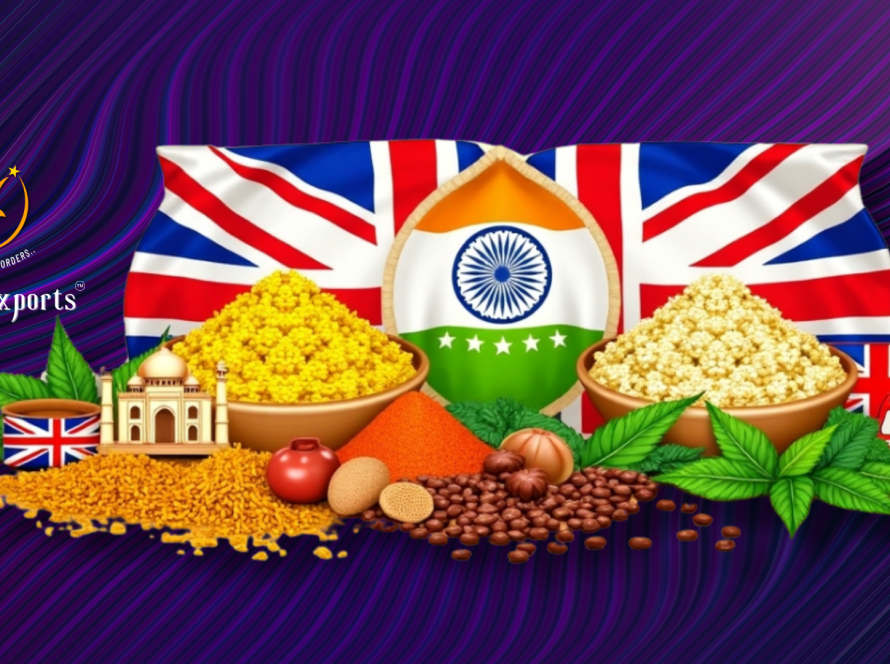India has long been a leader in agricultural production, with grains among its top exports. At Liberty Exports, we proudly export high-quality grains to over 100 countries worldwide. This blog highlights India’s top cereal exports, past trends, and their significance in the global market.
India’s Cereal Exports – An Overview
India’s multiple agro-climatic regions position it as a strong producer of agricultural products like rice, wheat, maize, barley, and millet. Farmers in India grow these cereals not only for local consumption but also for export to countries worldwide. In the last ten years, Indian cereal exports have made significant strides in terms of volume and extent.

The top importers of Indian cereals include Saudi Arabia, Benin, Iran, Iraq, and Côte d’Ivoire. These countries rely on India for cereal supplies across a wide geographical region. These countries account for a significant portion of India’s cereal exports, demonstrating their strong confidence in Indian produce.

Key Markets and Trends of Cereal Exports (2015–2024)
Saudi Arabia: A Leading Importer of Indian Rice
Saudi Arabia has been one of the biggest recipients of Indian cereals, especially rice. The export volume surged from approximately 604,755 metric tons in 2015 to over 1,100,000 metric tons in 2023. This steady growth highlights the strong and consistent demand for Indian cereals in the Saudi market.
Benin: A Growing Market for Non-Basmati Rice
Benin, a major importer of non-Basmati rice, has witnessed a significant increase in cereal imports. In 2015, exports to Benin stood at 143,661 metric tons, while during 2021–2024 (April–October), exports averaged around 428,663 metric tons. This growth underscores India’s expanding presence in African cereal markets.
Iran: Fluctuating Trade but a Key Market for Basmati Rice
Despite fluctuations in trade relations, Iran remains an important market for Indian Basmati rice. Exports peaked at over 1 million metric tons in 2018–2019, rising from 386,452 metric tons in 2015. However, the quantity has moderated in recent years due to changing trade dynamics.
Iraq: Steady Demand for Wheat and Rice
Iraq has shown a commendable increase in demand for Indian cereals, particularly wheat and rice. Export volumes have grown from 240,877 metric tons in 2015 to over 753,000 metric tons in 2023, demonstrating sustained market demand.
West African Markets: Côte d’Ivoire and Guinea on the Rise
West African nations are emerging as important destinations for Indian cereal exports.
- Côte d’Ivoire: Imports increased threefold from 98,975 metric tons in 2015 to over 341,000 metric tons in 2023.
- Guinea: Following an upward growth trend, Guinea’s imports reached over 309,000 metric tons in 2023.
This shift highlights India’s growing foothold in West African markets, signaling potential for further expansion.

Export trends over 2019-2024
Looking at the data for the period 2015-2024 throws up several interesting insights:
- The Increased Potential of African Markets: West Africa with the likes of Benin, Guinea and Cote d’Ivoire markets has emerged as a powerful force in the consumption of Indian cereals. There are growing populations, increased incomes, and a fondness for Indian varieties of rice.
- The Middle East Continues to Demand: Countries in the Middle East, Saudi Arabia, Iran, and Iraq in that order, are ever present in the lists of the highest importers. The demand for Basmati rice and wheat in this region reveals India’s strength in the particular region.
- Geopolitical Effects of Exports: Unfortunate international events and unfavourable conditions imposed by one nation on another shape the strange trade relations with Iran and Yemen. However, India’s commitment to quality enables the industry to maintain enduring relationships.
- Young countries in The Asian Region: Interest already shown by Malaysia, Vietnam and Indonesia in Indian cereals seems to be on the rise. After 2020, for example, Vietnam’s imports went up immensely to well over 400,000 thousand metric tons.
- Shifting Emphasis Away from Rice: Rice takes centre stage as the major focus area, but opportunities to export other cereals like wheat, maize, and millet have grown significantly over the years. Countries like Kenya and Somalia are increasingly embracing these cereals, expanding India’s range of cereal exports.
India’s Competitive Edge
What makes Indian cereals distinct when competing against foreign-produced ones? There are many among them:
- Quality Control: Indian rice and other cereals are known for their quality, taste and scent.
- Reasonably Priced: The intensive bulk production in India helps to keep prices down and the projects are easy for any foreign buyer.
- Better Coverage Area: Indian weather conditions alone provide for diverse varieties of climate enabling the growth of cereals for international markets.
- Sustainability Practices: Indian exporters are adopting sustainable farming and packaging practices that resonate with global phenomena.
Future Outlook
There is rising competition and increasing opportunities for Indian cereal exports in the international markets. Liberty Exports considers this the right time to offer newer markets around the globe that would open up more business opportunities for us.
Indians usually have a wide array of products to choose from hence spending has to increase on technology and other developments to have a sustainable competitive advantage. Working on other options such as offshore funding will also help Indian exporters to reduce risks in case the market performs poorly.
Liberty Exports: Your Trusted Partner in Quality
Liberty Exports offers a trusted platform for purchasing premium Indian rice, including varieties like Basmati, popular in regions like Saudi Arabia, South Africa, Maura, and Geoffrey. We aim to partner with like-minded importers and stakeholders to achieve excellence, one grain at a time. This blog highlights the Indian Cereal Export Industry’s strengths in quality, diversification, and trade networks. Share your feedback or suggestions to enhance it further




